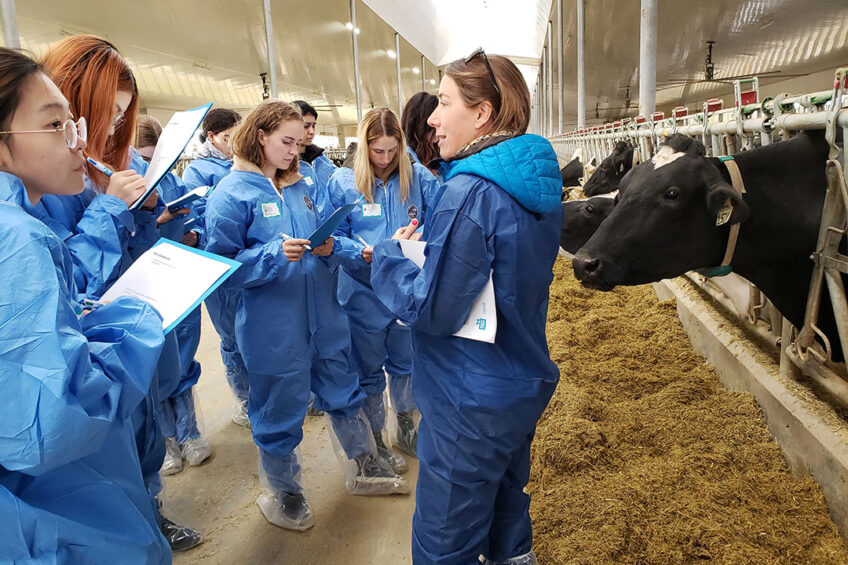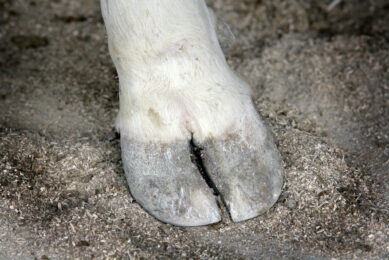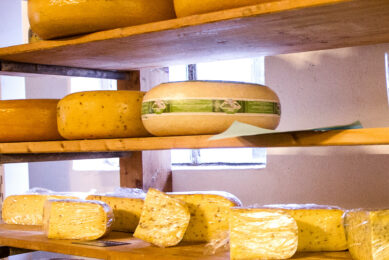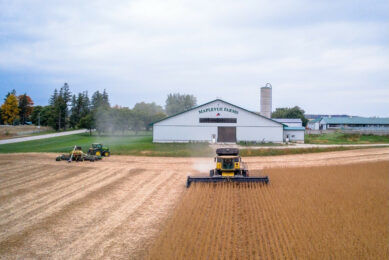Canada’s biosecurity: Changes and challenges

It’s been a few months since all Canadian dairy farmers had to begin implementing the Biosecurity module of the national proAction programme. We look at how this module was developed and what one leading farmer found most challenging in putting its requirements in place.
About a decade ago, along with many other national dairy associations across the developed world, Dairy Farmers of Canada (DFC) created the proAction programme. This initiative, based on scientific research and best practices, ensures all farms are operating at a similar level across all aspects of dairy farming, addressed in six modules.

The modules Milk Quality, Food Safety, Animal Care and Traceability have already been implemented by farmers from coast to coast. The Biosecurity module implementation is well underway – if not already complete – by most farmers, and the Environment module must be implemented by September 2021.
Allowing farmers to integrate a module every two years, says DFC, gives them time to absorb the requirements and make changes to meet them. Every dairy farm in Canada is independently assessed on every module by various individuals, the vast majority of whom were already involved in Canada’s dairy industry before proAction. Assessors for the Food Safety module, for example, were found and trained from the existing national pool of farm inspectors and advisors.
Before we look at how the Biosecurity module was developed and the challenges of implementation for a leading Canadian farmer, let’s delve a little more deeply into how the overarching proAction programme came to be. From the start, DFC leaders were of the view that while the programme needed to have high credibility at all levels (including independent assessment), the requirements needed to be practical for farmers, and farmers also needed to see clear benefits of participation. Farmers were therefore consulted from the very beginning in various ways for the programme’s development, including meetings in all provinces to gather farmer feedback. Along with various industry experts, farmers also sit on the overall ProAction committee as well as the committee (and subcommittees) for each module.
After independent verification of how they did or did not meet each module’s requirements, farmers are given their results. They are compared to their peers and, if needed, given acceptable time to take corrective action on any requirements needing attention. All of the proAction modules are also subject to periodic updates, as “landscapes” for disease, environmental issues and more evolve.

Module development
The focus of the Biosecurity module is obviously on managing risks and preventing the introduction of disease into, and its spread within, Canadian dairy cattle herds. “The underlying premise behind [this] module is the old adage that ‘an ounce of prevention is worth a pound of cure’,” adds David Wiens, DFC vice president and chair of DFC’s proAction committee. The requirements are very much based on the National Biosecurity Standard for Dairy Farms, a detailed document produced by the Canadian Food Inspection Agency. The module was piloted on a farm, revised and then released for training purposes in 2018.
As part of this module, farmers must complete a biosecurity risk assessment questionnaire with their herd veterinarian every two years. They must also document and implement standard operating procedures (SOPs) related to biosecurity. “Examples of these new standards range from addressing the movement of animals and authorised visitors entering a farm,” says Wiens, “to preventative protocols for vaccinations, appropriate protection such as clean boots or boot covers for guests, biosecurity signage and clear records of diseases on the farm.”
How best to handle visitors to the farm in ways that ensure biosecurity is protected was foreseen as a particular challenge of this module’s implementation. Wiens notes that dairy farmers are “very proud of what they do and want to remain open and accessible to visitors” and that how to handle visitors presented “a delicate balancing act” in module development. In the end, DFC notes that each farmer has to work with his or her veterinarian to determine the right ways forward.
Farmer perspective
Handling visitors was indeed a tough conundrum for Dave Taylor, a British Columbia dairy farmer who served on the technical subcommittee for development of the Biosecurity module. With his wife, Lisa, and other family members, Taylor produces milk and breeds Holsteins at their Viewfield Farm on Vancouver Island. Viewfield has won the top provincial honour for milk quality, and Dave and Lisa are also winners of the prestigious Canadian Outstanding Young Farmers’ Award.
Like any dairy farm, Viewfield receives a fair amount of traffic, and Taylor explains that “like visitors to any other farm, they have no set times when they arrive. I think that those who travel from farm to farm are the ones that we watch to make sure that they are being careful in regard to biosecurity, and that there are boundaries to where they should go on our farm. We also have multiple entry points to our farm, which also can be a real challenge.”
Adding to normal industry traffic are community members who walk onto parts of the farm in order to access recreational fishing on the adjacent land. “Most stick to a roadway,” says Taylor, “and are respectful of signs and our communication about having dogs on a leash if they are on our property.”
As to the requirements of the entire Biosecurity module, Taylor notes that while they were almost all already being met on his farm, they mostly were not being met in the way the module has them laid out. Adjustments therefore had to be made, and Taylor observes that “changes like this can be frustrating, as it means re-training all individuals working on the farm.”
Some of the changes the Taylors made included additional signage with contact names and numbers, more detailed reporting on the health of each cow, and creating written SOPs for all vaccinations, for new cattle entering the herd and for cattle returning back to the herd. They also now do more to get health information for each new cow, which isn’t always easy. However, through it all, they had the support of their veterinarian, various proAction co-ordinators and their provincial dairy association.
There are other things that Taylor and his family did not have to change, as well as some other biosecurity-related items that they’ve chosen not to change at this point. “We still introduce cattle quickly into our herd, and this is due to the challenges around being able to isolate incoming cattle and not having special pens to allow us to do this for any prolonged period,” Taylor explains. “We also still feed raw milk (not saleable) to our young calves. This is an example of something that is not a requirement but is part of the risk assessment we do with the veterinarian.”

Taylor says that overall, he certainly expected to have to create SOPs around cow health events, to do some type of risk assessment and to have to make signage changes. “I’m not sure I expected to be challenged around farm tours and the risks associated with people on our farm,” he adds, “[or that I] expected the challenges of taking information from the risk assessment and implementing best practices around all of them.” There are so many things that farmers can focus on in their operations, he notes, but there is also “the practicality of only being able to work within the particular barn style and property that one has.”
Ongoing focus
Taylor is also not sure he expected to learn as much as he has about biosecurity. “Any time we [dairy farmers] face more regulation or requirements, there is an adjustment in mindset to adopt what needs to be done,” he says. “More than that, though, is the importance of seeing why biosecurity is important. I have come to really appreciate the importance of biosecurity on our farm through this programme, and what it forces one to think about with the risk assessment.”
While implementation of this module is complete at Viewfield Farm, the focus on biosecurity will of course be ongoing. Taylor reports that there are certain items in the risk assessment that he and his family are still evaluating in terms of improvement, and they are also exploring ways of possibly changing some of their practices to better protect their herd. All in all, he says the biosecurity module has not been difficult to implement, but does involve constant challenge to do things better and to minimise risk. “That is the ongoing challenge of this module, in my opinion,” he says.
What Taylor describes seems to perfectly exemplify what DFC has always foreseen for every stage of proAction implementation – the fostering of continuous improvement in Canada’s dairy industry. As Wiens says, maintaining a rigorous and credible quality assurance program like proAction is important, “because our industry has made a pledge to lead, not follow.”










